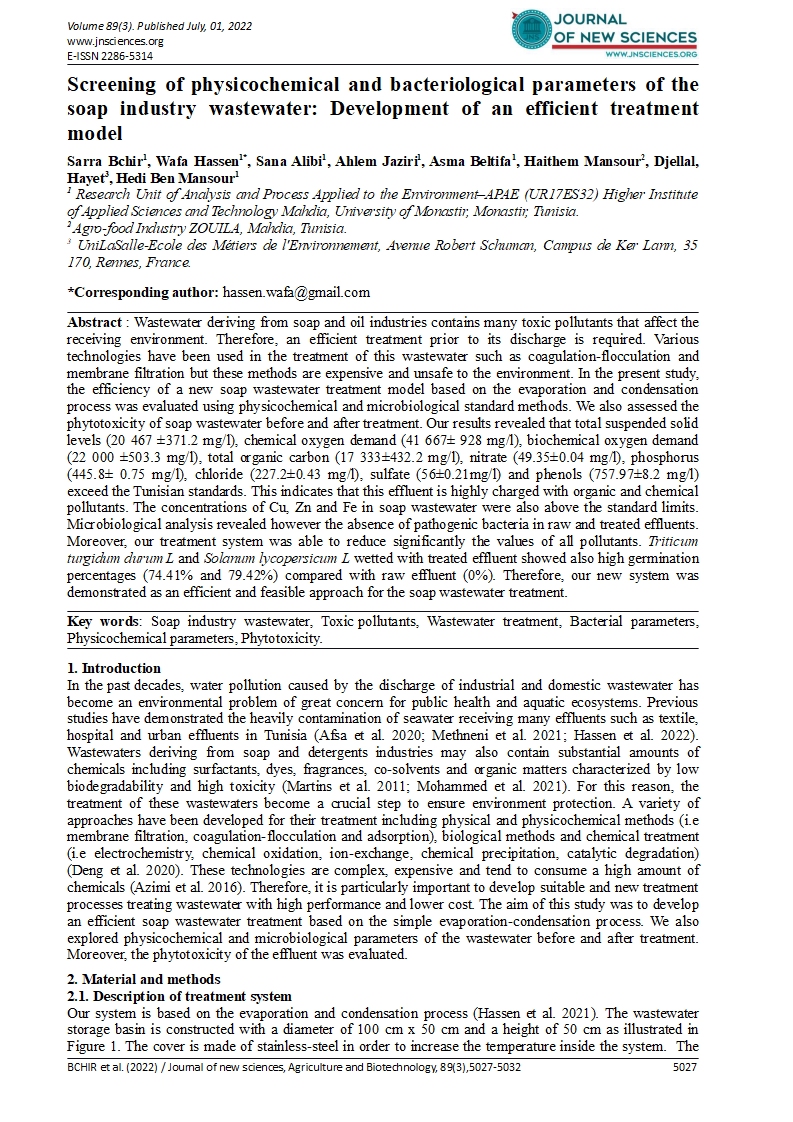- Category: Volume 89
- Hits: 1262
Regional-scale flood modeling using GIS and HEC-HMS / RAS: A case study for the upper -valley of the Medjerda (Tunisia)

Mohamed Lassaad Kotti 1
Taoufik Hermassi 1
1Carthage University National Research Institute of Rural Engineering, Water and Forests (INRGREF), Rue Hédi El Karray El Menzah IV-BP N°10 2080 Ariana, Tunisia
DOI: https://doi.org/10.55416/sunb.jns01.2207.08907
Abstract : A combined hydrological and hydraulic model is presented for flood prediction in Tunisia. This model is applied to the upper-valley of the Medjerda as a test case study. Observed flows of the 2003 flood event is used for hydrological and hydraulic models, and those of the 2009 and 2012 floods events are used for validation of models. The physically based hydrologic model HEC-HMS is used to estimate the flowrate at the outlet and predicts flows accurately of the ungauged Tessa watershed which is a right bank tributary of the Medjerda river, using and calibrating the SCS-Curve Number method of runoff estimation. The HEC-RAS hydraulic model is applied to simulate flood flows and inundation levels in the downstream floodplain. The predicted flowrates of Tessa watershed are used for mapping inundations in the Jendouba-Boussalem section of the Medjerda upper-valley. All the 2D HEC-RAS numerical simulation of the 2003, 2009, 2012 flood events were performed using topographic data by inserting the DEM of the study area with 30 m resolution, soil, land use, river geometry and cross-section were obtained by combining measured survey data with cross-section delineated from the DEM. The results of hydraulic simulation for 2003 event show a good matching with observed flowrates values. The quote part of the Tessa watershed on floods is also investigated, and shows that Tessa watershed contributes with approximatively 10% on the Medjerda River flowrates. The model may be useful in developing flood forecasting and early warning systems to mitigate losses due to flooding.
Key words: GIS, Flood modeling, Rainfall-runoff, Medjerda, HEC-RAS






